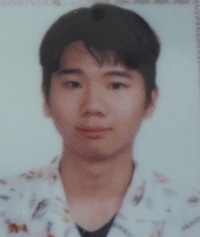Sejong City, Korea’s new administrative capital.
South Korea’s attempt to decentralize government has been a deep-rooted, persisting issue since the reconstruction after the war of 1950. First suggested by President Park Chung-hee in the late 1980s, however, the plan to diversify the government came into existence under the Roh Moo-hyun administration in the early 2000s.
In the beginning, the plan was strongly opposed and had drawn fierce criticisms. There were many concerns surrounding issues of administrative inefficiency and the city’s lack of infrastructure: many worried it would be a huge waste of money and time on prospective nothing. Though the plan encountered much resistance and had been attempted to be revised numerous times, especially during the Lee Myung-bak administration, the city’s condition began to improve, and the plan was eventually carried out.
The primary goal to build the new city was to promote balanced regional development beyond the capital, Seoul; disperse of the population from heavily populated Seoul; ameliorate security threats from North Korea (Seoul is only about 50km away from the direct DMZ while Sejong is about 120km further away from Seoul).
Sejong City has great potentials. And this view is often based on demographic and economic aspects. The population of Sejong City is growing steeply. According to statistics Korea, the government institution responsible for statistics in South Korea, the population increased from 115,000 in 2012 to 350,000 in 2020: each year, the city experiences an average growth of 30,000 citizens. Not only that the population is booming but also that the average age of the population is 36 years considerably lower than the median age of South Korea's population, which is 40.8 years. This prospering aspect has enabled the city to develop and maintain more and more commercial districts. Now, there are about 16,000 business sectors in Sejong, which increased by almost 250% since 2012.
 ▲ Buildings are getteing constructed in Sejong City. Sejong city is under development. (By JoonHak Kim)
▲ Buildings are getteing constructed in Sejong City. Sejong city is under development. (By JoonHak Kim)
Sejong city is a good place to live, raise children, and simply relax a bit. The city has its unique metropolitan taste different from other cities: to illustrate, there are many natural parks amid tall buildings that cannot be easily found in other cities. In fact, Sejong lake park is the biggest artificial lake park in Korea with its 320,000㎡ reservation surface area. Equally importantly, Sejong city is a great place for children’s education. According to the statistics provided by Sejong city, there is one teacher per every 13.6 citizens, allowing students to have a better education with more teachers.
 ▲ Sejong Lake Park, one of the largest man-made lake parks in Asia. (by JoonHak Kim)
▲ Sejong Lake Park, one of the largest man-made lake parks in Asia. (by JoonHak Kim)It is true Sejong city is still under development: there are many of the views that Sejong city is not yet an attractive place to live in. Subsequently, there is considerable room for improvements such as air pollution and traffic congestion problems. However, it is also true that Sejong city has great potential as well. The writer hopes that Sejong city will fulfill its potential.
다른 곳에 퍼가실 때는 아래 고유 링크 주소를 출처로 사용해주세요.


Wichita collegiate, 11th grade